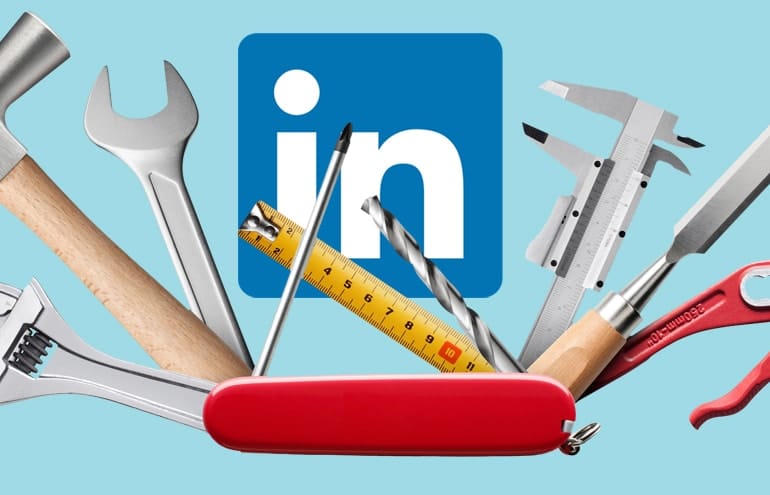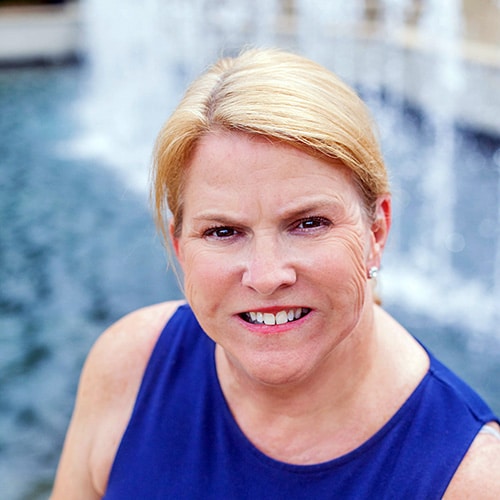Here’s how to conduct a thorough LinkedIn profile update — because when your business is running on virtual connections, a stale profile isn’t going to cut it.

Table of contents
Dismissing LinkedIn as the “boring” social media network, many professionals are content to slap an outdated photo on their profiles, dash out a nondescriptive tagline, and call it a day (then, promptly forget about the platform for another 16 months). According to a recent survey, more than 80% of lawyers report underutilizing LinkedIn as a professional development tool. Nonetheless, it remains the most widely used social platform for B2B businesses. According to the survey, 68% of in-house counsel use LinkedIn regularly for professional purposes, from networking with colleagues to connecting with outside counsel and finding professional and business-related news.
Four Things Your LinkedIn Profile Needs
Linkedin is important. If you haven’t touched your profile in years, giving it a much-needed face-lift may feel daunting. Fortunately, though, your LinkedIn profile is a living, breathing document. You can change it gradually and update it on an ongoing basis.
To help you get started with your LinkedIn profile update, here are four simple, achievable steps to dust off your LinkedIn profile so it shines.
Step 1: Start at the Top
Before you get into the meat of your Linkedin profile update and network, start with a few key areas. Consider these your digital first impression.
Your Profile Photo
You have one chance to make a good impression. This starts with your profile photo. Just as you would not show up to a client meeting looking messy or unkempt, do not simply upload a grainy, cropped iPhone photo taken at a cocktail party. Instead, opt to use your firm bio photo or, if you don’t have one, hire a photographer to snap a few professional headshots.
Here are a few key dos and don’ts:
- DO use a professional shot.
- DO select a photo that shows your entire head, neck and shoulders. This should take up about 60% of the circle.
- DON’T select a photo that shows only your face.
- DON’T use a photo that includes your spouse, your dog or your children.
- DON’T use a photo taken with your iPhone.
- DON’t select a photo taken at a party or social event.
It may feel unfair, but if you use a bad photo, people won’t take you seriously. Invest in a high-quality, professional shot that reflects your authority and competence.
Your Background Photo
The header image across the top of your LinkedIn profile marks your second chance to make a good impression. As such, do not rely on LinkedIn’s default photo of a molecular structure. This will make your profile appear lazy and unfinished.
Good background photos include items such as:
- Your firm logo.
- The courthouse in your county.
- The skyline of the city where you live and practice.
- A scene that is relevant to your practice area. (For example, if you are a construction lawyer, find a high-quality stock image of a construction site. Or, if you practice maritime law, find a pleasing image of a seascape.)
Your LinkedIn Profile Headline Description
Your headline statement is what appears directly beneath your name and rounds out a connection’s first impression of you. This statement is vital, as it tells your connections 1) what you do, and 2) what makes you different. When you write this statement, do not merely list your position. Instead, explain what you do in a way that reflects your values and your mission.
To illustrate, let’s look at an example: an estate planning attorney at a midsize law firm. Here are two different headline descriptions:
Description 1: Associate attorney at Dewey, Cheatem, and Howe.
Description 2: Attorney helping families plan for their futures, prevent conflict, and protect their assets so they can preserve their legacies.
Now, you tell me: Which is better?
The first description tells us absolutely nothing about what this attorney does. Not to mention, a potential client searching for estate planning attorneys will never find this person because the description is vague. On the other hand, the second line is highly descriptive, captures the attorney’s values, and tells clients and referral sources exactly what he does and what he stands for.
Your tagline is your chance to shine. So don’t hold back! Use adjectives, be descriptive and don’t be afraid to show off a little. It will serve you — and the people you serve — well.
Your Contact Information
One of the greatest missed opportunities is leaving your contact information blank. Include your email, phone number or both so that prospects know how to reach you. If you make them work too hard to find you, then you will lose them.
Step 2: Tell Your Story
Once you polish your digital first impression, it’s time to tackle your “About” section. This is your chance to demonstrate your unique angle — that is, why clients and potential referral sources should choose you over your competitors.
In writing this section, imagine you are at a cocktail party and someone asks you what you do. Your “About” section should read like your response:
- Write it in the first person.
- Use complete sentences.
- Include a few notes about what makes you stand out. Have you tried 100 cases? Are you trained in alternative dispute resolution methods? Do you have three decades of experience in the same practice area? Are you board-certified in a given practice?
In writing this section of your LinkedIn profile, keep in mind that the more information you include — and the more detail you involve — the easier it will be for someone to find you in an organic search.
Step 3: Share Your Experience
When you tackle the “Experience” section in your LinkedIn profile update, resist the temptation to simply bullet out your various employers and positions. Once again, imagine what you would tell people at a professional networking event: What did you do in a given position? What specific responsibilities did you manage? What unique contributions did you make?
When listing your skills, think beyond the traditional buzzwords like diligence, responsiveness and sound judgment. People expect you to demonstrate these skills. (Who wants to hire a lazy, unresponsive lawyer with poor judgment?) What you want to emphasize are traits that people would not necessarily expect you to have. Do you have Six Sigma experience? Are you tech-savvy? Have you analyzed a budget? Completed diversity training? Are you a time management expert? Do you know how to code?
Think about what gives you a unique competitive edge and delineate these skills.
Step 4: Engage
Your LinkedIn profile update will get dusty quickly if you don’t engage. As with any social platform, consistent activity boosts your searchability. Not to mention, an engaged presence on LinkedIn builds your reputation as an authority and a thought leader, allows for engagement through comments, connections and shares, and keeps you apprised of new developments in your industry as well as career moves your colleagues are making.
If you are already swamped, the thought of taking on yet another task will probably feel impossible. But it doesn’t have to. Staying engaged on LinkedIn can be simple, so long as you have targeted, specific goals:
- When curating and sharing content, stay in your zone of expertise. Only follow pages and people who are relevant to your industry and practice area to avoid content overload.
- Check your notifications at least twice a week and designate a set time to respond to them to avoid constant interruptions in your workday.
- Post content that is valuable to your connections. Avoid topics that are needlessly polarizing or incendiary.
Lean into LinkedIn to Forge Relationships, Drive Meaningful Discussion and Bring in Business
Success on LinkedIn is achievable and attainable. The best way to make use of it is to engage actively. Make a habit of checking your profile to keep it fresh and updated and engage in relevant and meaningful discussion. Before long, your incremental efforts will pay dividends in the form of new connections, relationships and business opportunities.
Illustration ©iStockPhoto.com
Subscribe to Attorney at Work
Get really good ideas every day for your law practice: Subscribe to the Daily Dispatch (it’s free).






















